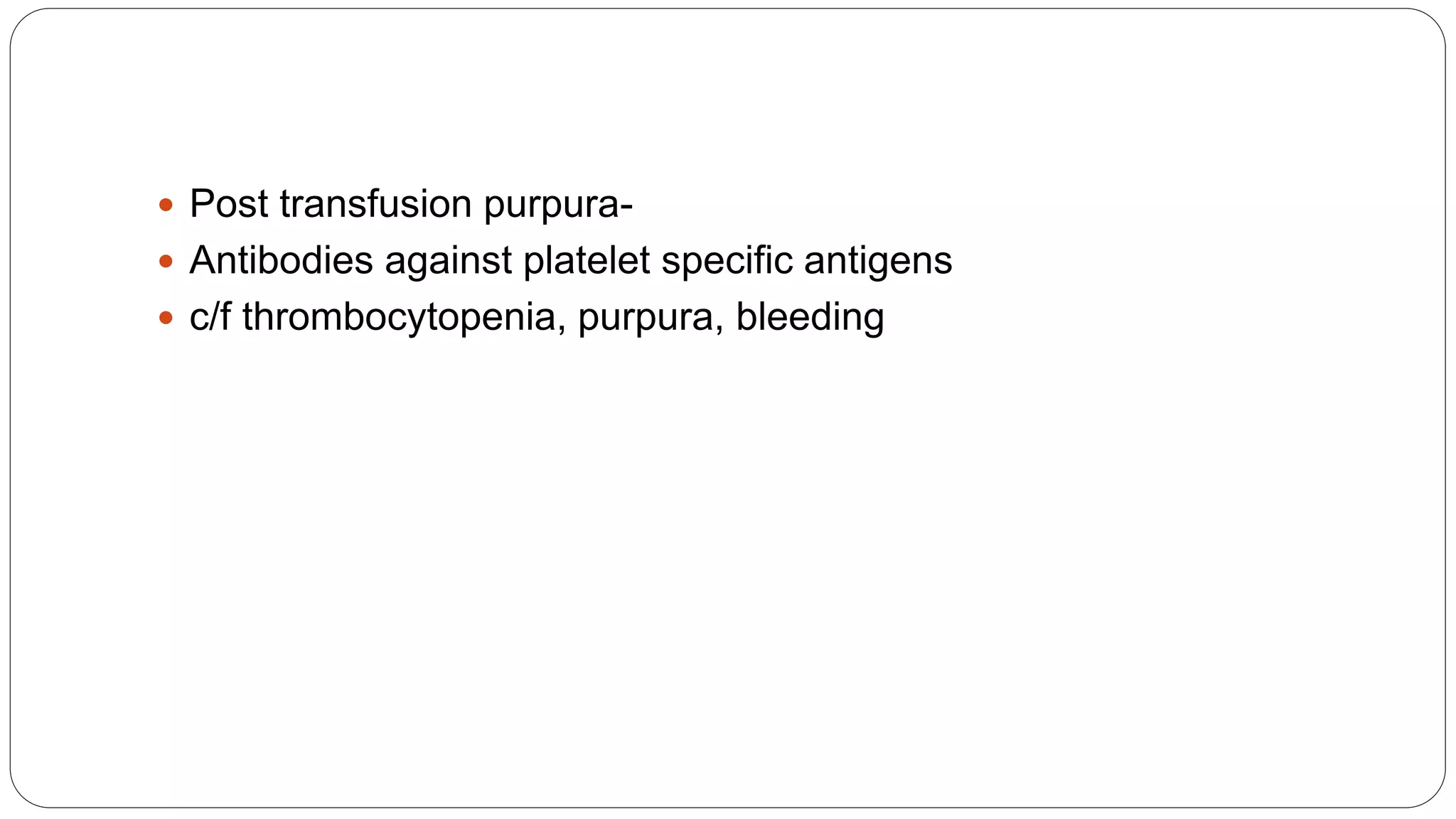This document discusses different types of transfusion reactions, including immune and non-immune reactions. Immune reactions can be immediate like hemolytic or febrile non-hemolytic reactions, or late reactions like alloimmunization or post-transfusion purpura. Non-immune reactions include circulatory overload from too large a transfusion or transmission of infectious agents. Specific reactions are defined by their pathophysiology and clinical features such as fever, chills, breathing issues, or bleeding tendencies. Transfusion reactions require recognition of symptoms to provide appropriate treatment and prevent future complications.












